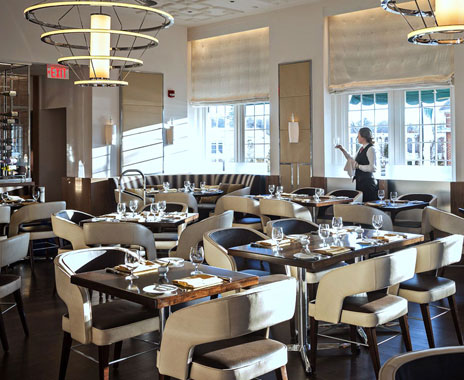Whether it’s to enhance the dining experience or to make operations more efficient, there are many reasons why restaurant operators might consider revisiting a prototype design. But when is the right time to reassess the relevance of a current design, and how do you know what should drive the design changes?
Unfortunately, many businesses operate under the mindset of “don’t mess with success,” which can hinder growth and potential. Often times it’s this kind of thinking that keeps companies from really assessing the efficiency of their day-to-day operations, and subsequently the most appropriate design.
It’s important to examine everything from customer foot traffic patterns to kitchen layout to truly determine if your restaurant could use an upgrade that would increase both efficiency and productivity. Stephen Wall, director of construction at Zoës Kitchen, has seen multiple sides of the business of design assessment. Wall previously worked at Pizza Hut, where the luxury of a large corporation afforded them an entire team dedicated to testing new technology and processes in their test kitchen. He’s now on the flip side, working with a growing company that’s still figuring out how to do things, and do things right, for their business. It wasn’t until they recently conducted a time motion study at several of their locations that they realized missed opportunities as a result of the design structure, and that they needed to be honing down their processes in the kitchen. “Until someone shined a light on the issues, we just said, ‘Well, that’s how we’ve always done it.’ It became clear to us that we should be focusing on moving the product, not the person.”
Take time to examine the usefulness of each piece of equipment in your kitchen, and explore new options and innovations. There may be new technology that could allow you to combine two functions into one or save employee labor time. Ask yourself what you need to get the job done right, but also most economically. Solve for labor by building in greater efficiency and reduce the number of steps employees take in the kitchen or in the process of preparing a dish. Finding the right equipment will help you standardize operations, improve consistency, and increase overall customer satisfaction.
If looking at external or interior design changes, ask whether making intentional changes will strengthen the brand.
Gone are the days where you could slap a sign and a few awnings to the side of a building and call it a day. Technology and the ever growing “foodie culture” movement have made the average Joe a connoisseur of consumption in everything from tasty vittles to design, and consumers are expecting your brand message to be sophisticated and complex. Guests expect to see your brand delivered to them through everything they can taste, touch, see, hear, and smell.
Intentional changes in design can reinforce the brand message and also keep your customer engaged. People value authenticity, so it’s important to stay true to the brand message. However, giving it a fresh perspective can help regenerate interest in the brand, or garner new clientele. The trick is in finding a solution that attracts new patrons without the alienation of your current ones.
Consider how your brand could be positioned, the brand message made more concise, and how to serve this through upgrading interior finishes, redesigning the exterior and updating packaging redesign.
Design changes should bring intrinsic and perceived value to your customers. So stay focused on who your core group of consumers are or the type of customers you would like to be attracting.
In the quick-service space, there has been a recent shift to higher end interior and exterior design. Simply look at any new Chick-Fil-A or McDonald’s to see the focus on higher quality interiors and the creation of a distinct ambiance. The value for the guest is not just in the food anymore. It’s evident in everything from the minutia of the methodically organized condiment display to the implementation of soft seating over loose tables—there’s a focus on quality and perceived value that wasn’t there before.
It’s a new element of customer engagement that relies on more than just the product they’re selling. It’s also now about building a captivating and relevant environment. An upgrade in interior design can improve the customer’s perception of the brand and increase a restaurant’s perceived value.
So how can you gain an edge on the competition by leveraging this perceived value in your design? Ultimately, don’t make changes for the sake of making changes. Support your design decisions with firm data and testing, and always ask yourself if you will get credit from the customer for the design decisions you make.












